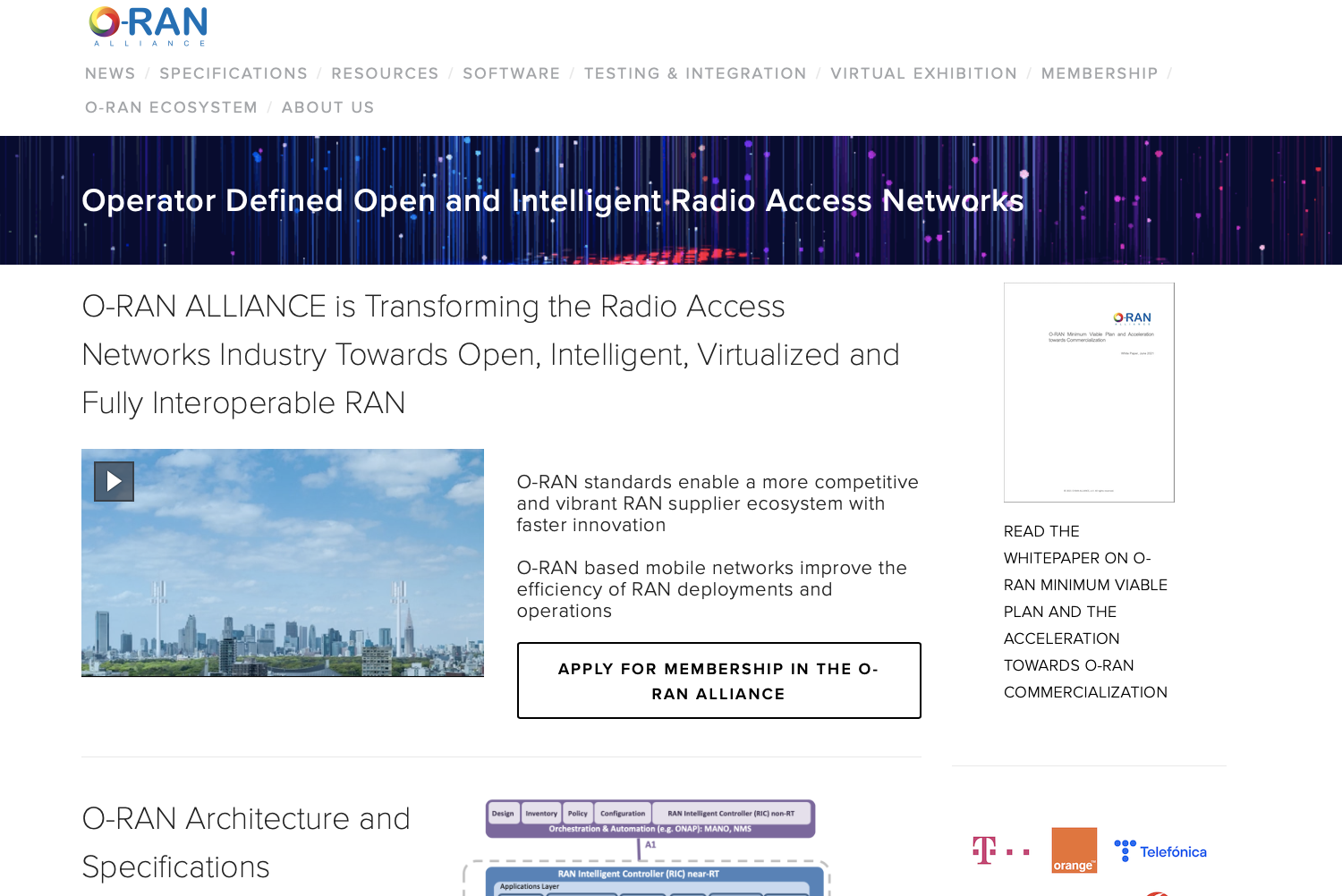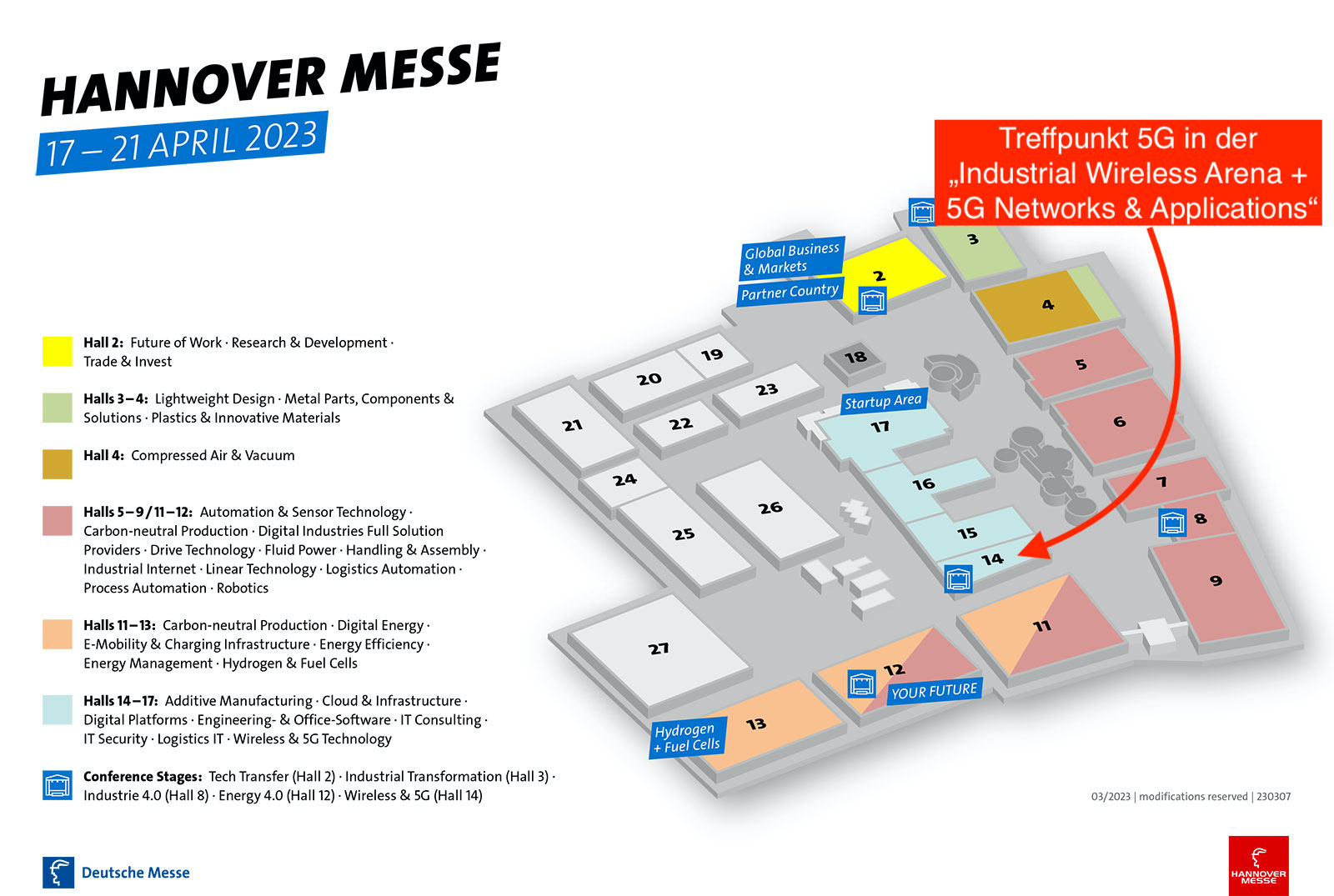The O-RAN Alliance aims to promote an ecosystem for building open, intelligent, virtualized and fully interoperable radio access networks (Open RAN). (Picture: Screenshot O-Ran Alliance)
The aspects of interoperability and availability of a future 5G infrastructure and its components will have a significant impact on the economic success and broad acceptance of 5G technology. This is true both from the perspective of policymakers and of industrial user groups such as the 5G-ACIA (5G Alliance for Connected Industries and Automation). Many see the Open RAN initiative as an effective lever.
Author: Michael Orzessek, Industry Solution Sales Director Wireless at Keysight Technologies Germany and Keysight Delgate Member to 5G-ACIA.
Open interfaces and virtualized functions are at the core of the Open RAN initiative. These two aspects alone also create many exciting new opportunities from an industrial use case perspective. Considering that a majority of industrial 5G networks will be based on private, non-public networks, the reverse is also true: providers of Open RAN solutions can hope for additional business related to industrial use cases.
Open Architecture
An open architecture enables a broader business ecosystem of suppliers and solution providers and presents an opportunity for specialized companies to offer a highly tunable RAN infrastructure for, say, a manufacturing environment. At the same time, the open interfaces can allow industrial end users to programmatically access the RAN in ways never before possible. This can enable highly customized RAN functions focused on industrial use cases, where the operational technology context can be used directly in the service management of the RAN functions. So from an economic perspective, this is a self-reinforcing positive development.
From a 5G ACIA perspective, the Open RAN movement can only be welcomed as well. Given the increasing choice of vendors for a 5G communications system and the likely ability to provide tuned and optimized RAN functions for industrial use cases, 5G-ACIA is following this development with growing interest. A look at the ICT members of the 5G-ACIA also shows that some of them already have an Open RAN-based offering in their portfolio.
Specifications supported by ICT industry
At the same time, it must be noted that while Open RAN offers flexibility and will thus enable many industrial use cases, the actual development of O-RAN specifications today is driven by the ICT industry, i.e., the mobile network providers and their supply chain. Therefore, the use cases of private mobile users currently drive the specification priorities and development efforts. This is why it is important that OT companies are involved in the O-RAN alliance. This is the only way to ensure that industrial use cases and requirements are adequately addressed in future specifications.
It is important that OT companies are involved in the O-RAN alliance. This is the only way to ensure that industrial use cases and requirements are adequately addressed in future specifications.
Michael Orzessek, Industry Solution Sales Director Wireless at Keysight Technologies Germany
But where does Open RAN stand today? Applying Geoffrey Moore’s lifecycle model of technology adoption to Open RAN, I would argue that as an overall concept it has not yet crossed the “chasm.” That is, we don’t yet see what Moore calls an “early majority” of companies adapting Open RAN. If you look at the MNO community, it’s being embraced by the innovators or early adopters. They have the organizational and financial capabilities to move forward with the first implementations. Consequently, there are only a handful of operators in Europe, for example, that are publicly declaring the adoption of Open RAN as the target RAN architecture. The declaration of intent by Deutsche Telekom, Orange, Telefonica, TIM and Vodafone on “The implementation of Open RAN based networks in Europe” is particularly noteworthy in this context.
Clarifying value proposition of Open RAN in industries as well
While such initiatives will certainly provide interesting references, it will be important for early potential adopters of Open RAN to be able to apply them to their individual target market segment. Nevertheless, one solution might be for industrial network domains to aggressively present themselves as key market participants in the success of Open RAN. This would demonstrate that Open RAN’s flexibility to support specific and unique industrial use cases can generate a strong value proposition in other industries as well. In this sense, even success in one of the specific target markets could help bridge the Moore’s divide.
In any case, however, the Open RAN movement should be seen as a medium- to long-term development in which there will very likely also be setbacks and a phase of disillusionment. However, the past has proven that open concepts have a great chance of being successful in the long term. The same can be expected for Open RAN.









Leave A Comment